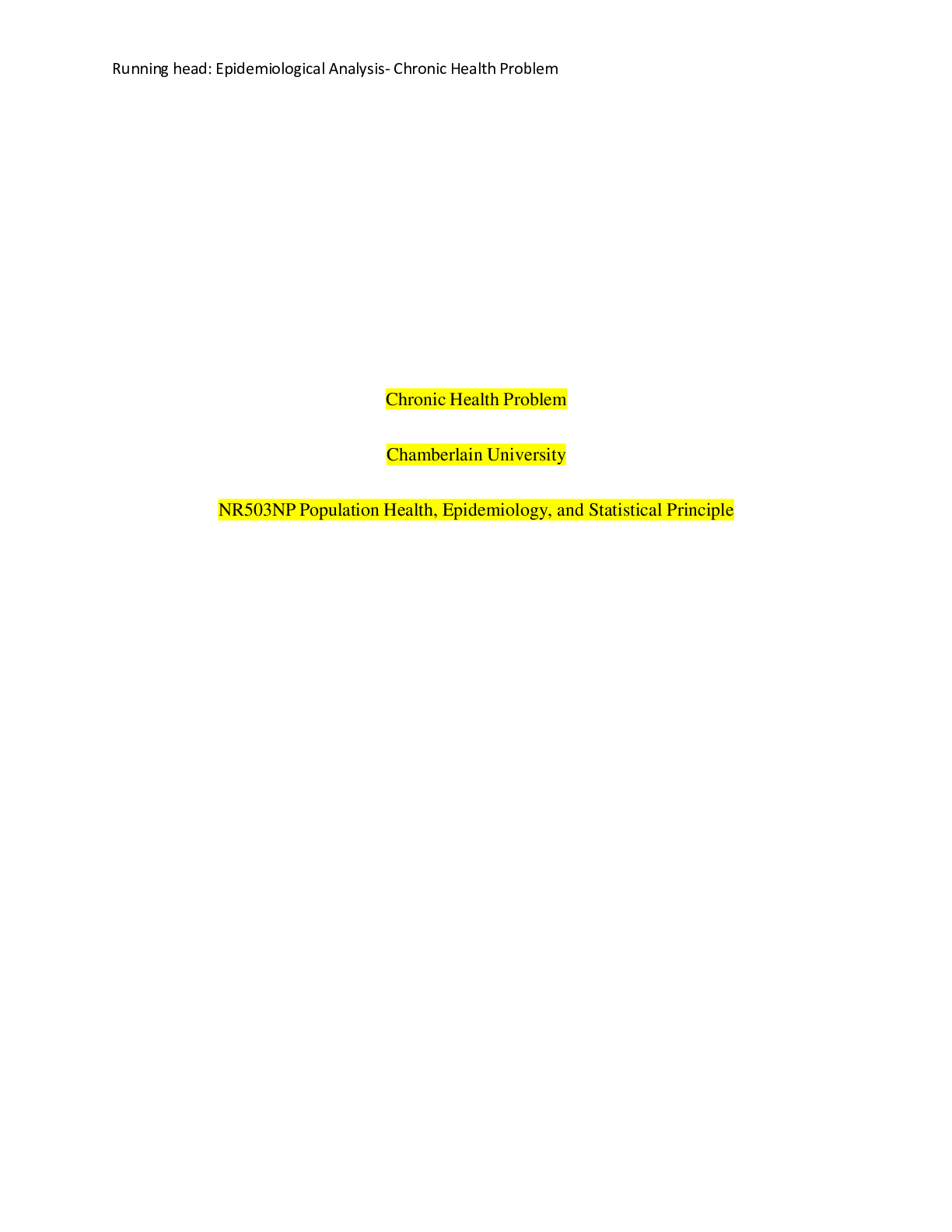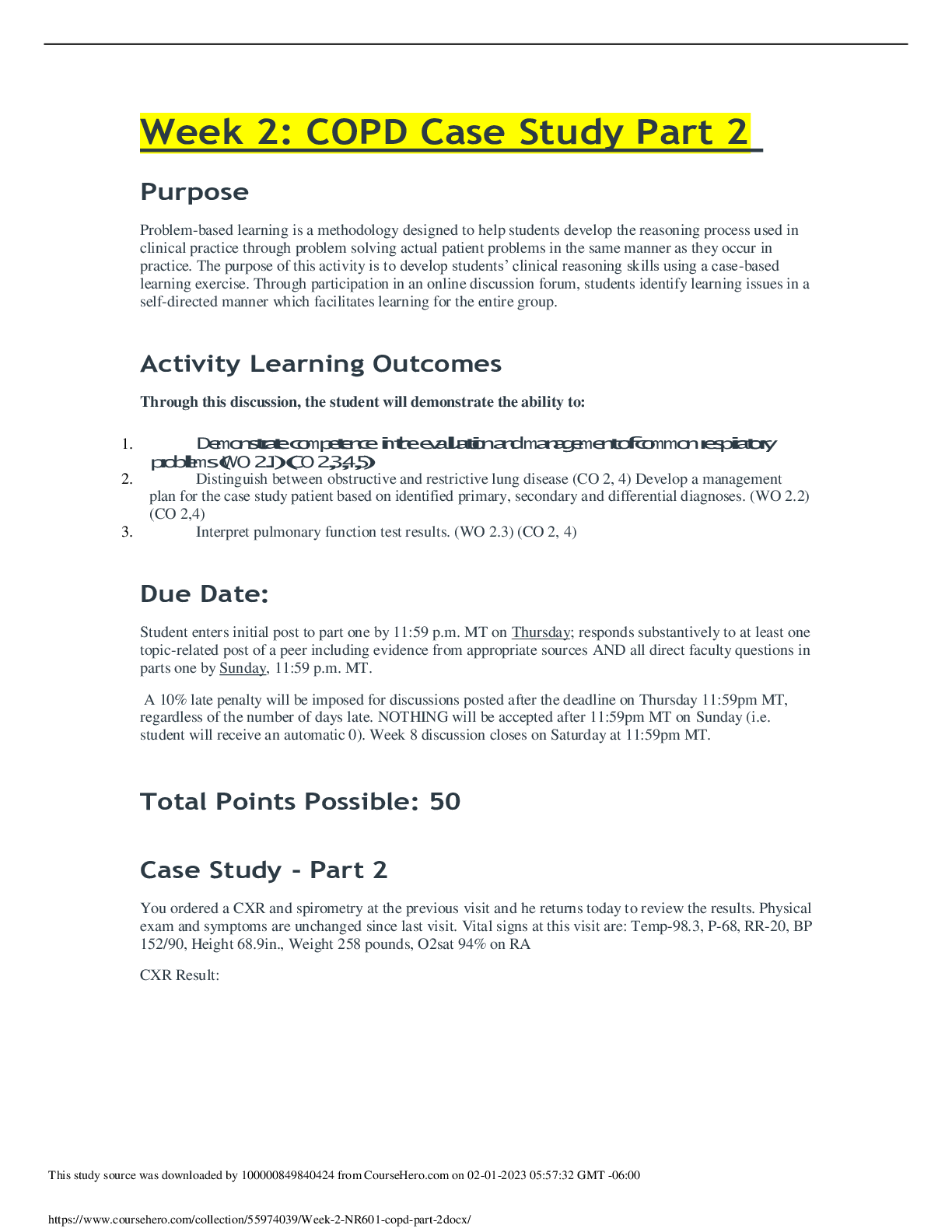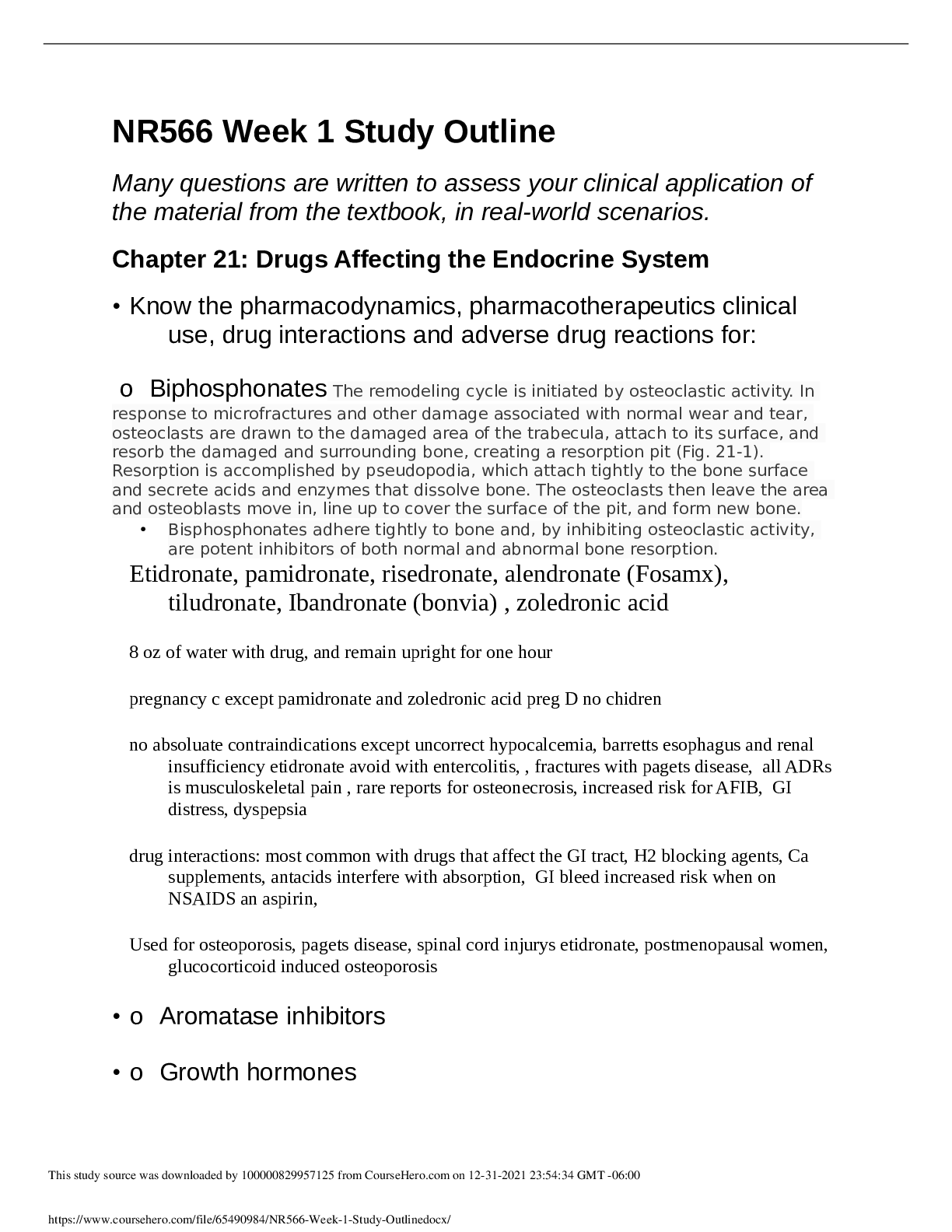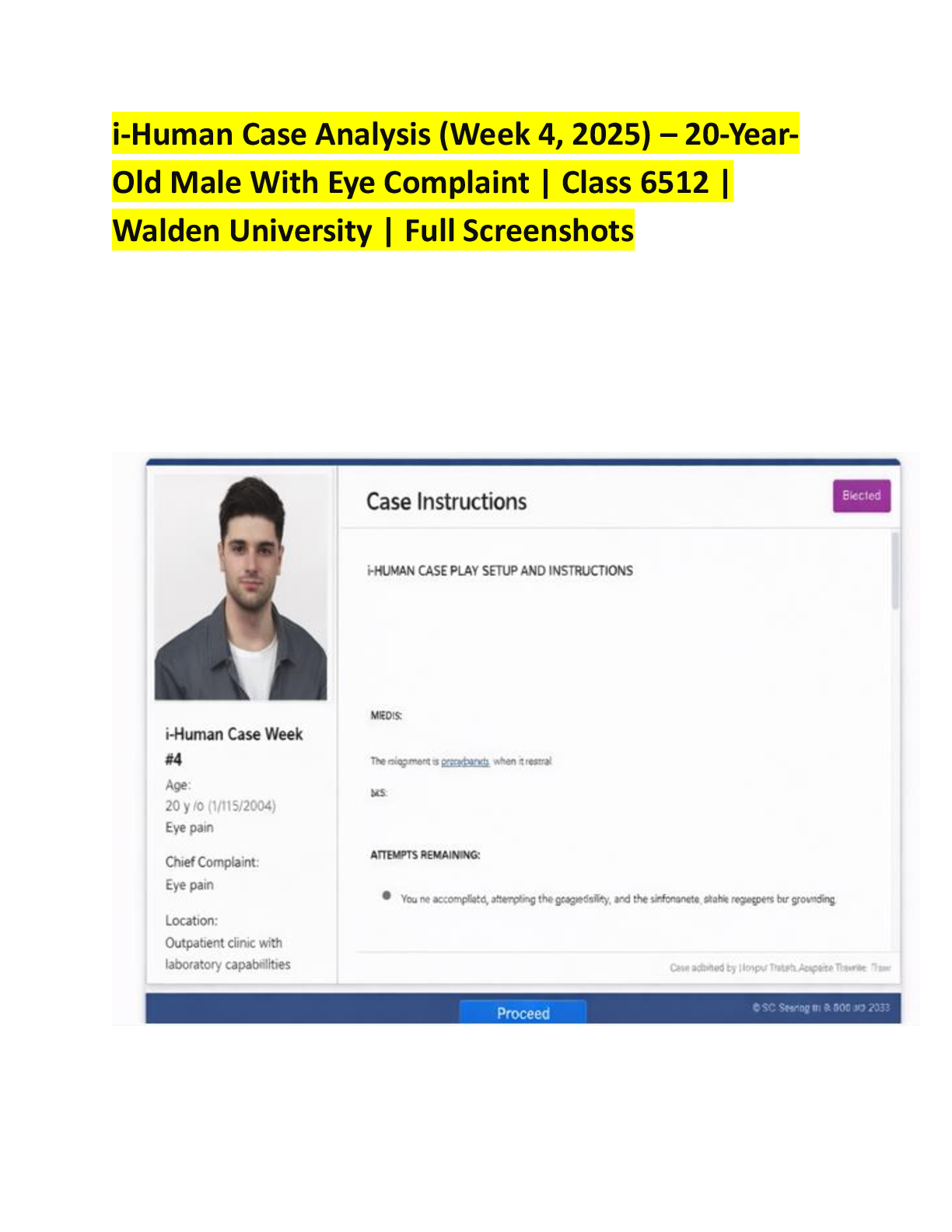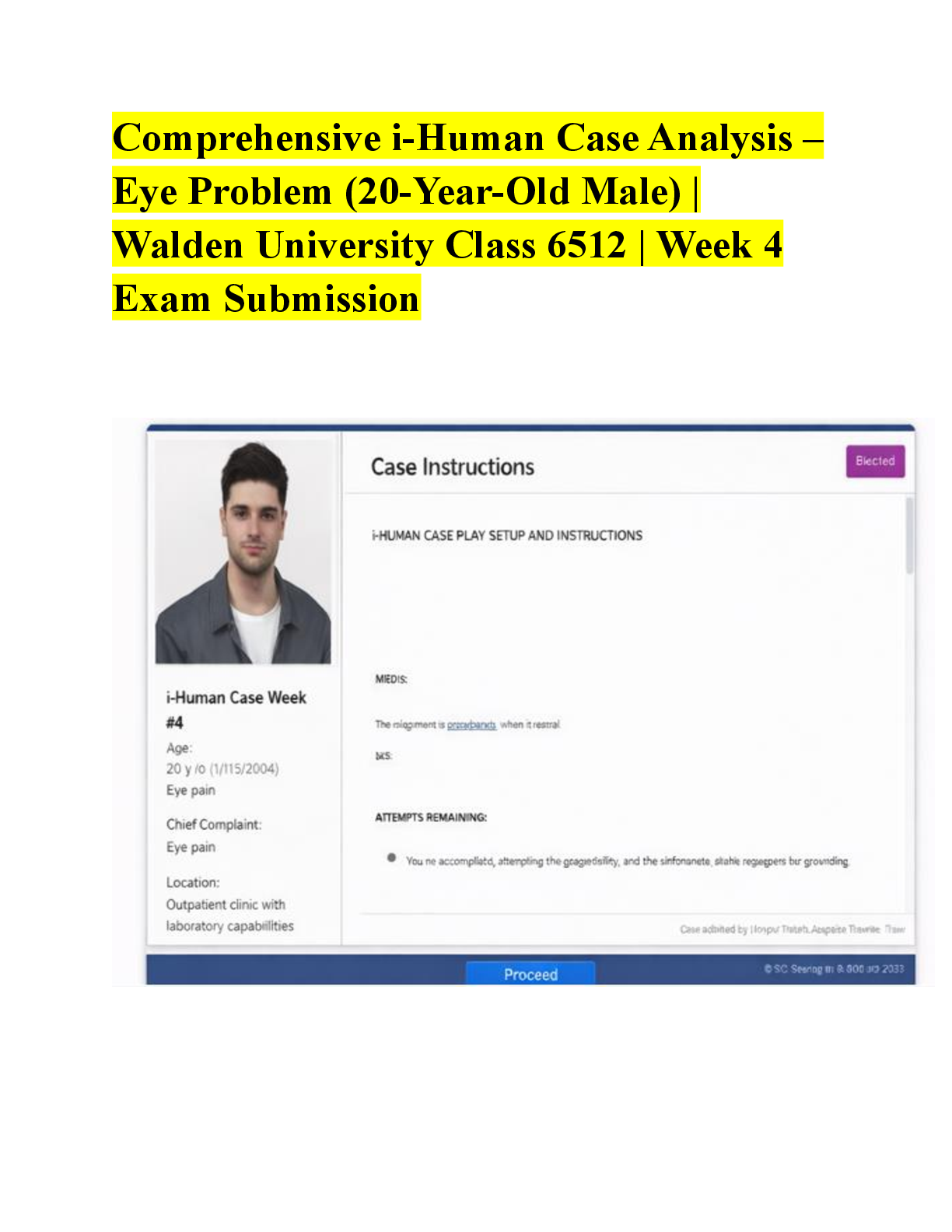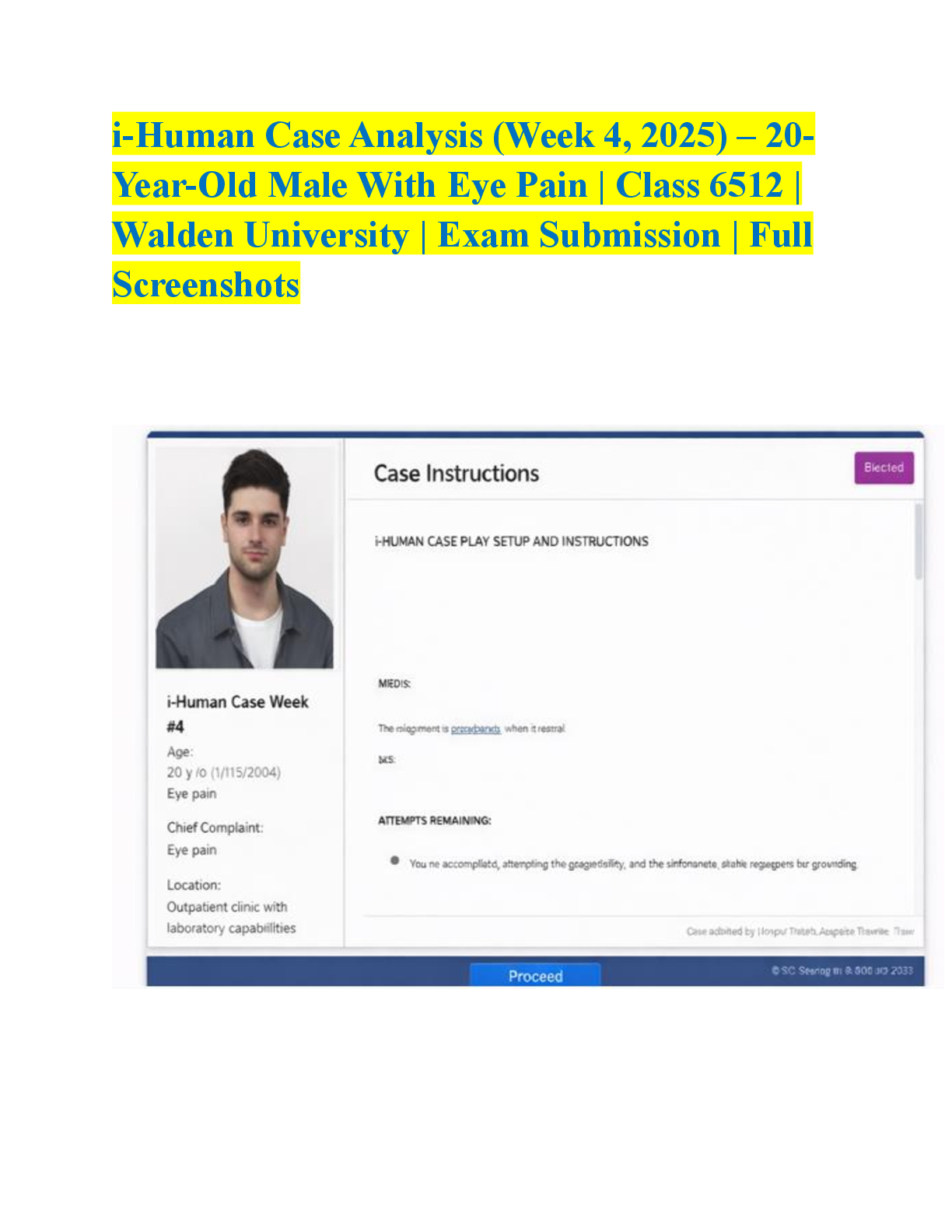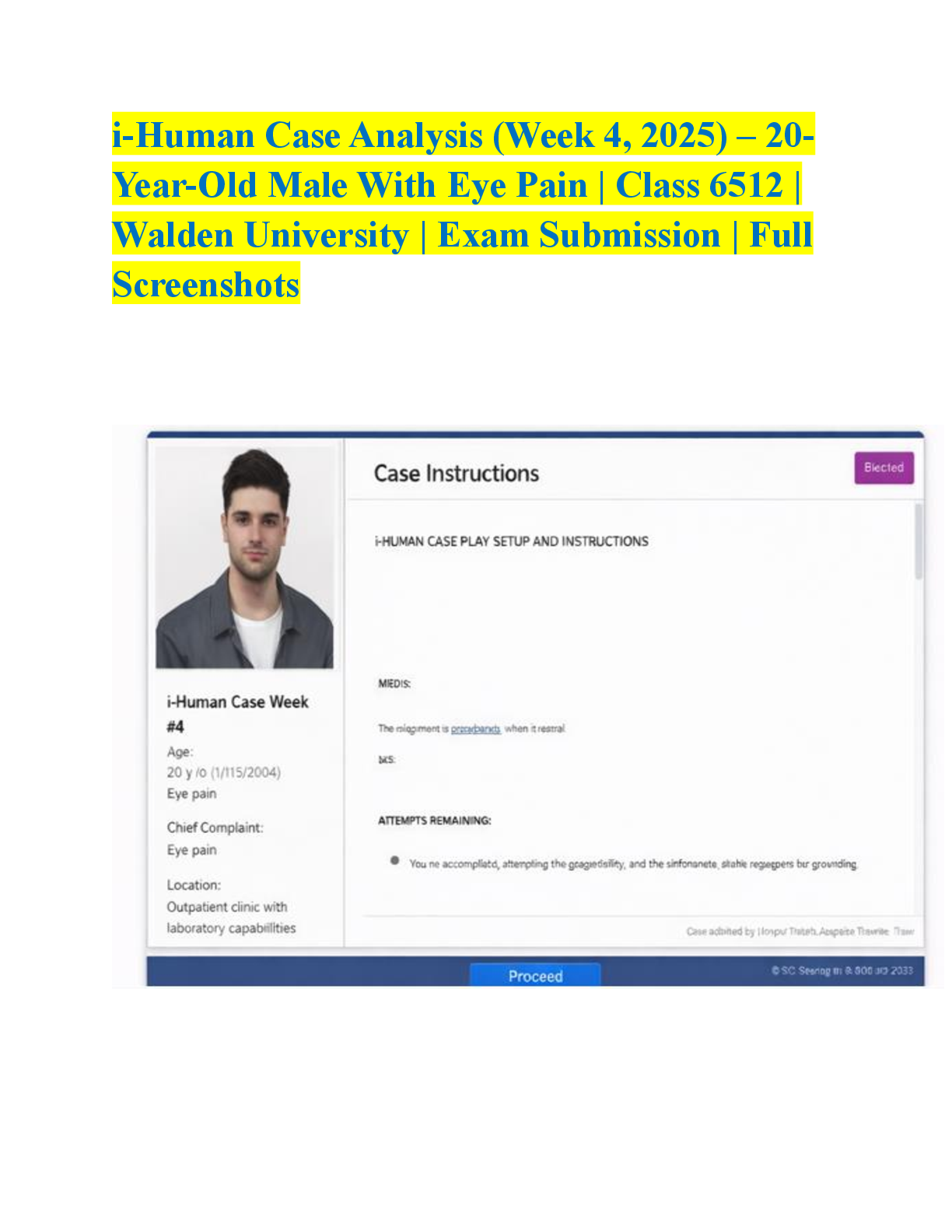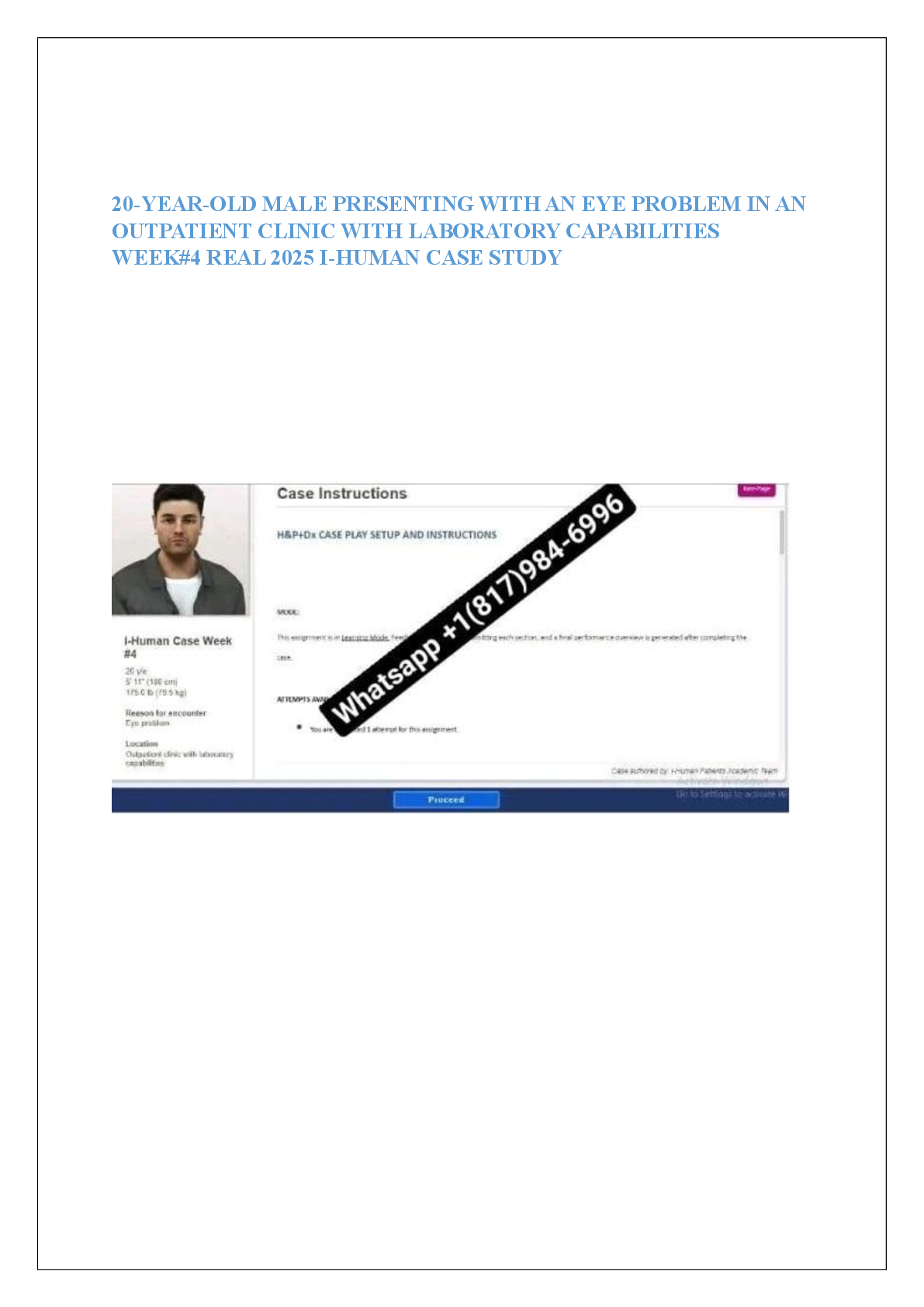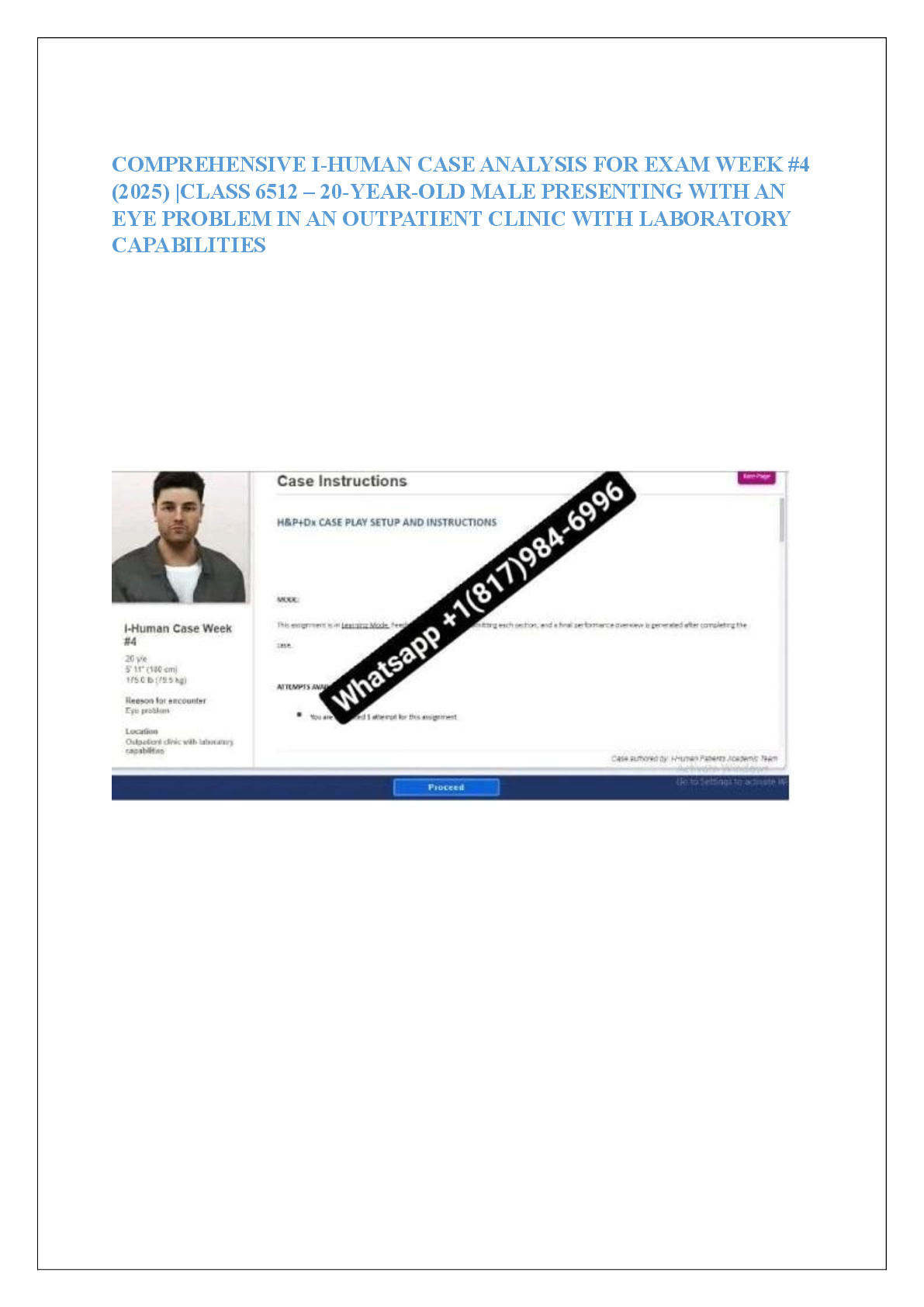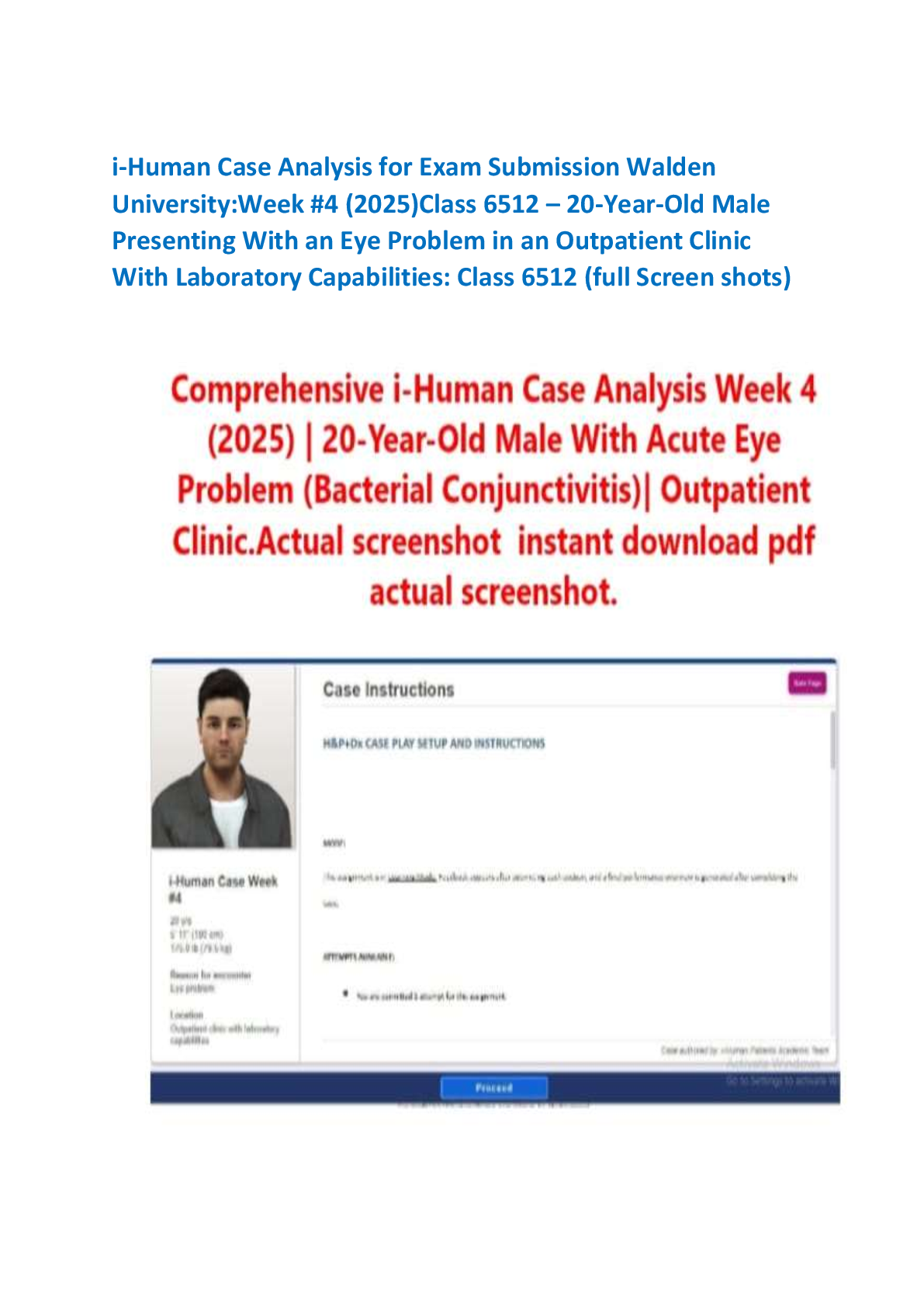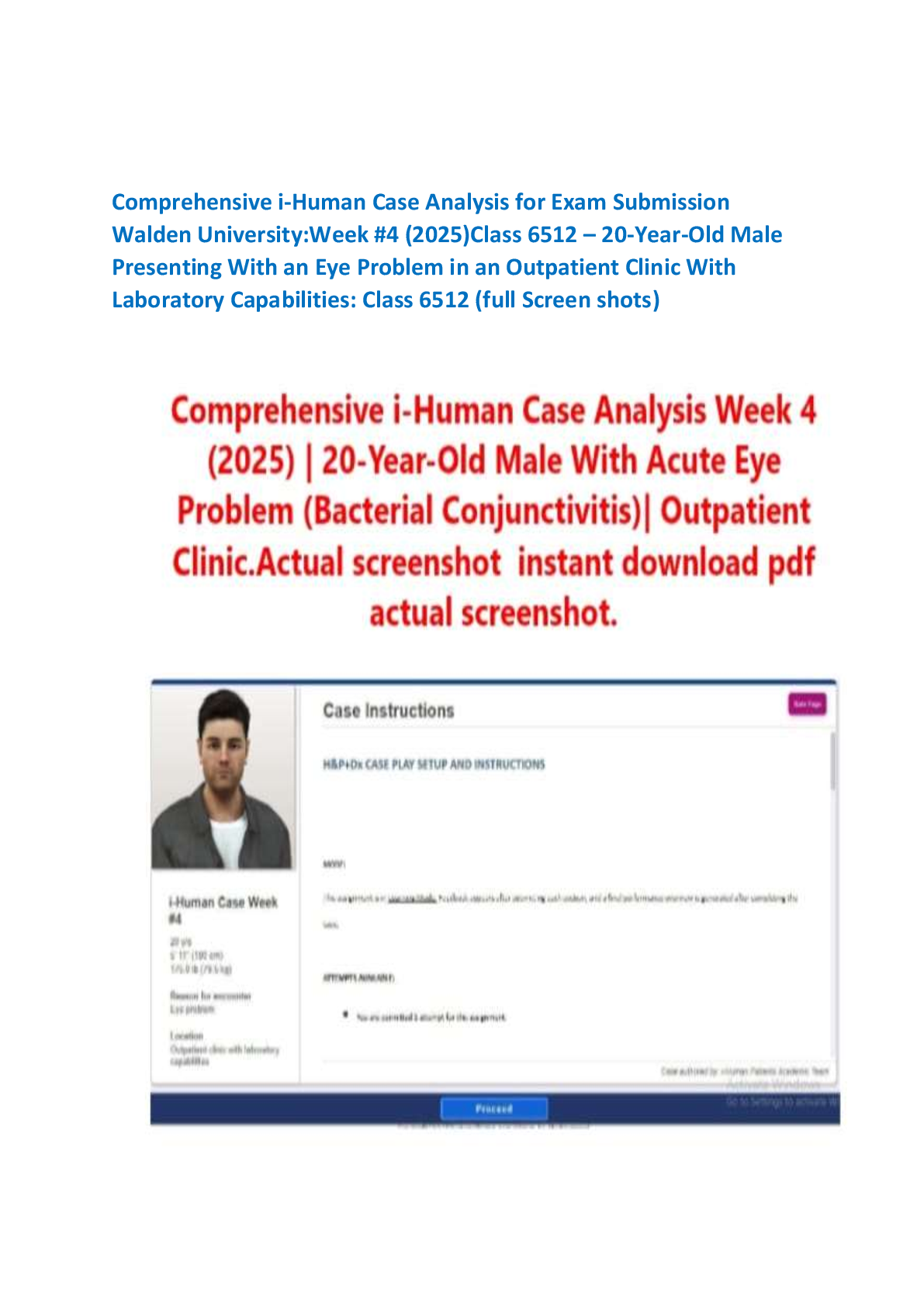Anatomy > CASE STUDY > BIOS-252 Week 2 Case Study Assignment: Multiple Sclerosis (GRADED A) (All)
BIOS-252 Week 2 Case Study Assignment: Multiple Sclerosis (GRADED A)
Document Content and Description Below
Week 2 Case Study: Multiple Sclerosis Chamberlain University BIOS 252-62958 – Anatomy and Physiology II with Lab March 13, 2022 Week 2 Case Study: Multiple Sclerosis 1. What cellular s ... tructure is degenerating and rebuilding in MS? In multiple sclerosis, the oligodendrocytes and myelin sheaths of the CNS deteriorate and are replaced by hardened scar tissue. (Saladin, 2021) 2. Does this explain the progression we see with the signs and symptoms? Explain why. Yes, when the oligodendrocytes and myelin sheaths deteriorate the nerve conduction is disrupted. When the nerve conduction is disrupted signs and symptoms are experienced. Regenerations it not perfect. Some of the nerve fibers connect to the wrong muscle fiber or it never finds a muscle fiber, and some damage neuron just die. (Saladin, 2021) Nerve injury is often followed by a mild degree of functional deficit and even when regeneration is achieved, nerve function might take a couple years to recover or does not recover at all. (Saladin, 2021) 3. When there are issues with the neural tissue like this, they will often look into the eye. Why? Optic neuritis is an acute inflammatory demyelinating disorder of the optic nerve. Optic neuritis is often identify as the initial attack of multiple sclerosis. (Kale, 2016) Optic neuritis can be defined as a Clinically isolated syndrome, a clinical demyelinating event that is isolated in time and mostly is the initial attack of MS. Clinically isolated syndrome optic neuritis may be the initial presentation in around 20% of MS patients, and optic neuritis presentation may occur during the course of the disease in 50% of patients with MS. Accurate and early assessment of optic neuritis is important for the early diagnosis of MS. (Kale, 2016) 4. Here are three early symptoms. that we might see in MS. Assign them to whether they are a part of the sensory, motor or autonomic nervous system. Afterward, try to describe how MS would cause these symptoms. Dysarthria: A motor nervous system disorder. Speech disorder caused by neuromuscular impairment that results in disturbance in motor control of the speech mechanism. The demyelinating degeneration cause by MS may result in spasticity, weakness, slowness, and/or ataxic incoordination of the lips, tongue, mandible, soft palate, vocal cords, and diaphragm. Like other symptoms of MS, speech or swallowing difficulties are both due to an area of damage nerves that normally aid in performing these tasks. (n.d.) Paresthesia: A sensory nervous system disorder. Abnormal sensations of prickling, burning, numbness, or tingling in the absence of actual stimulation. (Saladin, 2021). When nerves cells are damage the brain changes the way it interprets sensation. The brain starts creating false sensations, therefore patients may feel like their skin is burning or itching. (Villines & Hammond, 2021) Constipation: An Autonomic nervous system disorder. At cortical level, demyelination within the frontal lobe may affect the patient’s voluntary control over defecation. In patients with MS, it has been shown that there are delays in the motor pathways to the anal sphincter, as well as delay in generated evoked potentials within the spinal cord. (Preziosi et al., 2018) References Saladin, K. S., Gan, C. A., & Cushman, H. N. (2021). Chapter 12/Nervous Tissue. In Anatomy & Physiology: The unity of form and function (pp. 420–431). essay, McGraw-Hill Education. Kale, N. (2016, October 26). Optic neuritis as an early sign of multiple sclerosis. Eye and brain. Retrieved March 13, 2022, from https://www.ncbi.nlm.nih.gov/pmc/articles/PMC5398757/ MS.org. My MS - Speech & Swallowing Symptoms. (n.d.). Retrieved March 13, 2022, from https://my-ms.org/symptoms_speech.htm Villines, Z., & Hammond, N. (2021, May 26). MS tingling patterns: What to know and how to Cope. Medical News Today. Retrieved March 13, 2022, from https://www.medicalnewstoday.com/articles/ms-tingling-patterns#causes Preziosi, G., Gordon-Dixon, A., & Emmanuel, A. (2018, December 6). Neurogenic bowel dysfunction in patients with multiple sclerosis: Prevalence, impact, and management strategies. Degenerative neurological and neuromuscular disease. Retrieved March 13, 2022, from https://www.ncbi.nlm.nih.gov/pmc/articles/PMC6287516/ [Show More]
Last updated: 3 years ago
Preview 1 out of 4 pages

Buy this document to get the full access instantly
Instant Download Access after purchase
Buy NowInstant download
We Accept:

Also available in bundle (1)
Click Below to Access Bundle(s)

BIOS 252 Anatomy And Physiology II With Lab BUNDLE (LATEST UPDATES) | Questions and Answers/ ALL GRADED A+
BIOS 252 Week 1 Case Study Assignment: Muscles BIOS-252 Week 1 Muscular System – Lab Assignment BIOS 252 Week 1 Discussion Question: Skeletal and cardiac muscle tissues BIOS-252 Week 2 Case Study...
By Prof. Goodluck 3 years ago
$13.5
15
Reviews( 0 )
$10.50
Can't find what you want? Try our AI powered Search
Document information
Connected school, study & course
About the document
Uploaded On
Sep 05, 2022
Number of pages
4
Written in
All
Additional information
This document has been written for:
Uploaded
Sep 05, 2022
Downloads
0
Views
103



